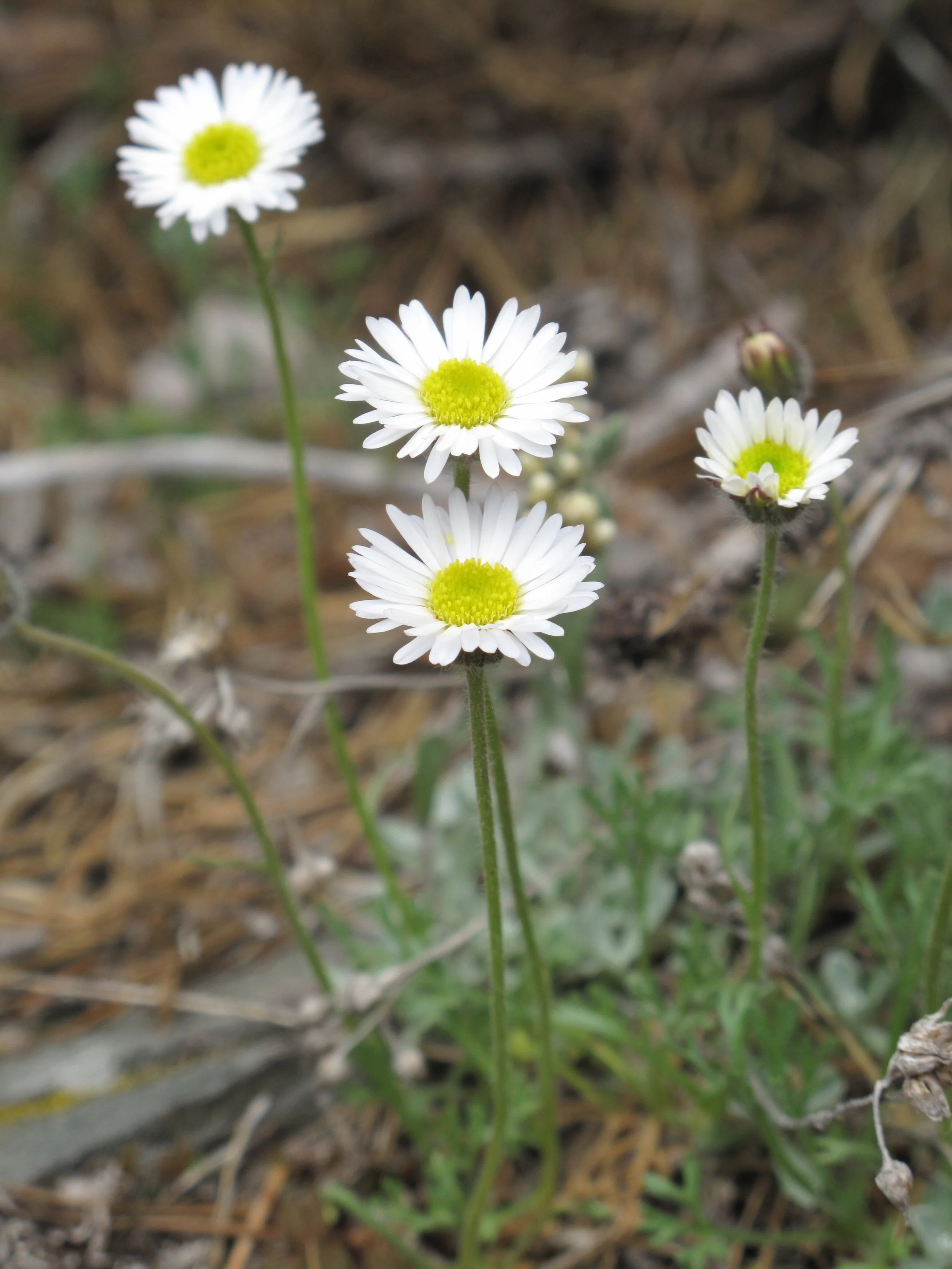The leaves of this mat-forming plant are a distinguishing feature—they are compound, with three leaflets, like a clover. The leaves are clustered thickly around the base of short-stemmed white flowers, partially obscuring the pea-shaped blossoms.
Read MoreThis erect or spreading perennial with its grey-green leaves may be up to 40 cm tall. Its round cluster of flowers can be white or pale reddish to purple.
Read MoreThis plant has several stems that grow from one clump. The stems may be 30–40 cm long, but they are partly lodged, and reach upward about 15–20 cm. The cream-white flowers form clusters at the end of the stalks. The leaves of this milk-vetch are distinctive—they are numerous, narrow linear leaflets 2–6 cm long.
Read MoreWith a nodding, bell-shaped blue blossom at the end of a slender stem, typically 20–35 cm tall, the harebell blooms in July and August. It grows on grassy slopes and open areas. One of over two hundred and fifty Campanula species worldwide, this particular one is the famous “bluebell of Scotland”.
Read MoreAccording to Wilkinson, some First Nations people ate the raw berry, and children sucked the nectar from the flowers. (48) However, the fruit may cause nausea.
Read MoreThis inhabitant of the dry prairie forms spiny cushions 3–20 cm across. It can produce flowers when the plant is so small that its blossom is bigger than it is. Flowers are purple- red, and 3–5 cm across. In fall the ripe fruit becomes sweet and juicy and reminiscent of kiwi.
Read MoreThis low growing, often prostrate, plant has narrow leaves, and dense, cylindrical flower spikes at the end of the flowering stalks.
Read MoreThis low growing plant has narrow leaves, and dense, cylindrical flower spikes at the end of the flowering stalks.
Read MoreThis deep-rooted perennial forms small tufts, or clumps, of basal grey-green leaves and many stems 10–30 cm tall. The flower heads, one to three or four per stem, are 2–3 cm across with many (up to one hundred) narrow, white ray florets that look like thin petals around a yellow centre.
Read MoreThe flowers of this small plant are very similar to those of the tufted fleabane (Erigeron caespitosus), but sometimes the blossoms have just the yellow central disk florets without the white ray florets. Also this plant is usually shorter, being only 5–15 cm tall. The distinctive feature of compound fleabane is its finely divided leaves.
Read MoreLook for small white blossoms, later bright red fruit, on runners that spread across the ground. They grow best in gravely soil. The scientific name Fragaria means fragrant, and refers to the smell of the ripe fruit. Anyone who has eaten the small red berries knows the wild fruit is delicious, with much more flavour than domestic fruit.
Read MoreBlooming in early spring, this charming little flower is well described by its common name. The blossom, up to 35 mm long by 10 mm wide, nods at the top of 10–30 cm tall stems.
Read MoreLarge, bright yellow flowers, surrounding a central disk of crimson, are showy at the ends of 20–60 cm stems. What appear to be petals are actually individual flowers called ray florets. This member of the daisy family blooms from June to August across the prairies on dry hillsides and in open areas.
Read MoreThis slender, 10–30 cm tall, flower is not very showy because the blossoms are small and open only one or two at a time. Also, it fully opens only at night. Typical of night blooming flowers, which are pollinated by moths, the protruding stamens are conspicuous and, in this plant, red-tipped.
Read MoreOn the dry open prairie, the stem rises 20–40 cm above basal leaves, and supports three nodding, purplish-pink flowers. By late June, the seed-heads have formed erect clusters of feathery styles. Large patches of these plants that have gone to seed look like a smoky haze drifting across the prairie, hence their common name, prairie smoke.
Read MoreThree species of Hedysarum grow on the prairies. They are sometimes referred to as sweet-vetch or sweet-broom. Typically, their pea-like flowers grow in long slender wand-like clusters. Northern hedysarum’s reddish purple flowers often grow in one sided clusters up to 15 cm long.
Read MoreThis plant’s common name likely originates in the milky latex secreted by its roots. A distinguishing feature is the mostly basal leaves that are divided into three to seven narrow segments. The flowers, about 2 cm across, form a flat topped yellow cluster.
Read MoreA late summer splash of pinkish-purple on a dry, sandy hillside, or even the edge of a gravel road, draws attention to the dotted blazing star flower. The plant grows as a clump, 10–30 cm tall, with the flowers in a dense cluster along the top half of each stalk.
Read MoreNamed for the explorer Captain Meriwether Lewis, this plant is a member of the flax family. The scientific name Linum acknowledges flax as the source of linen fibre. The pale blue flowers, 20–35 mm across, which occur in clusters atop 20–60 cm stems, last only one day.
Read MoreMost often found in sandy soils, the yellow flax, at 15–40 cm tall, is smaller than blue flax. Its linear leaves are few in number, stiff or rigid (as the scientific name suggests) and are easily broken off the stem. The flowers are a smaller, yellow version of their blue relative’s blossom.
Read More
















